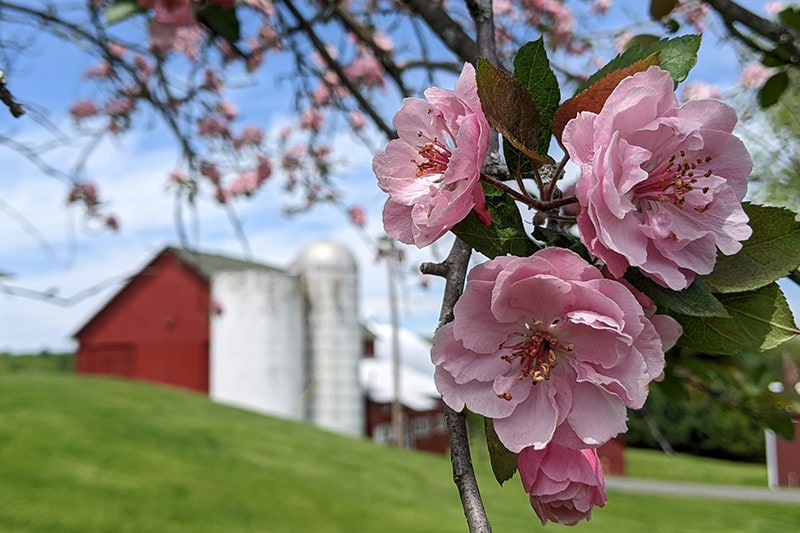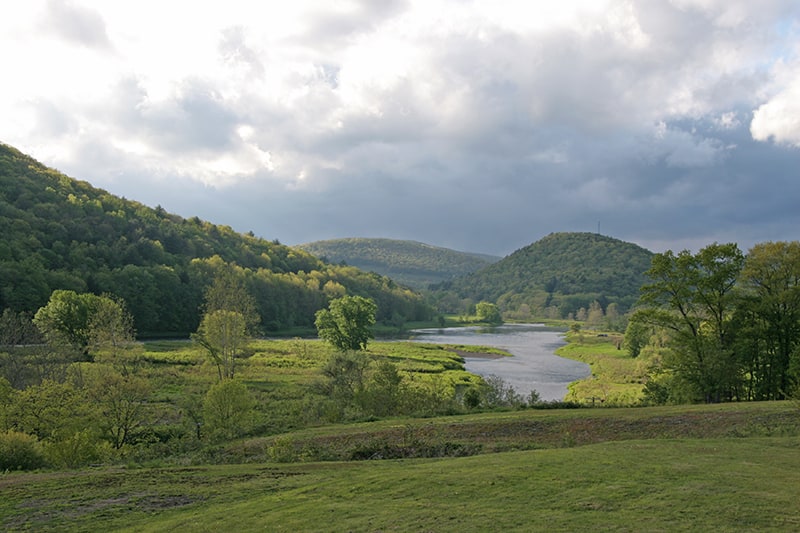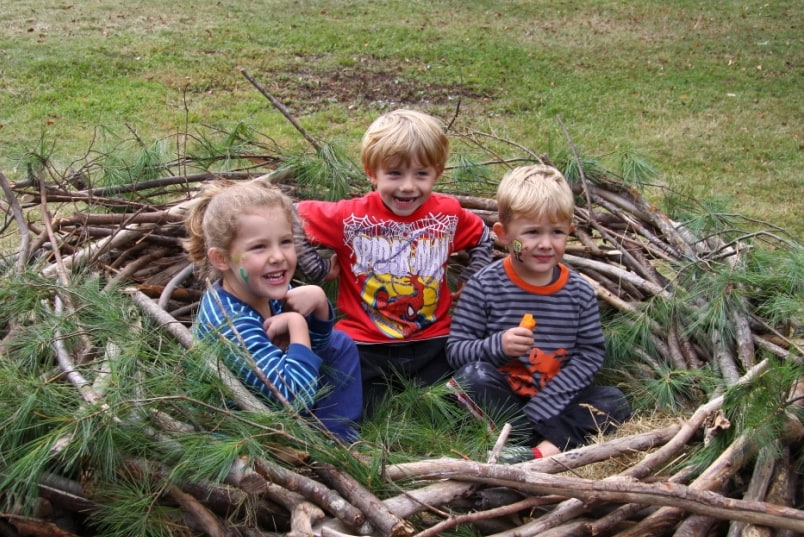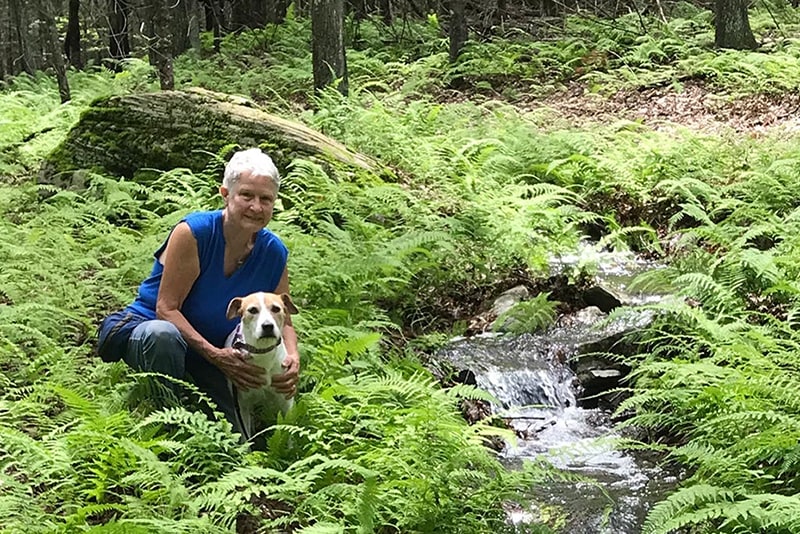What's New
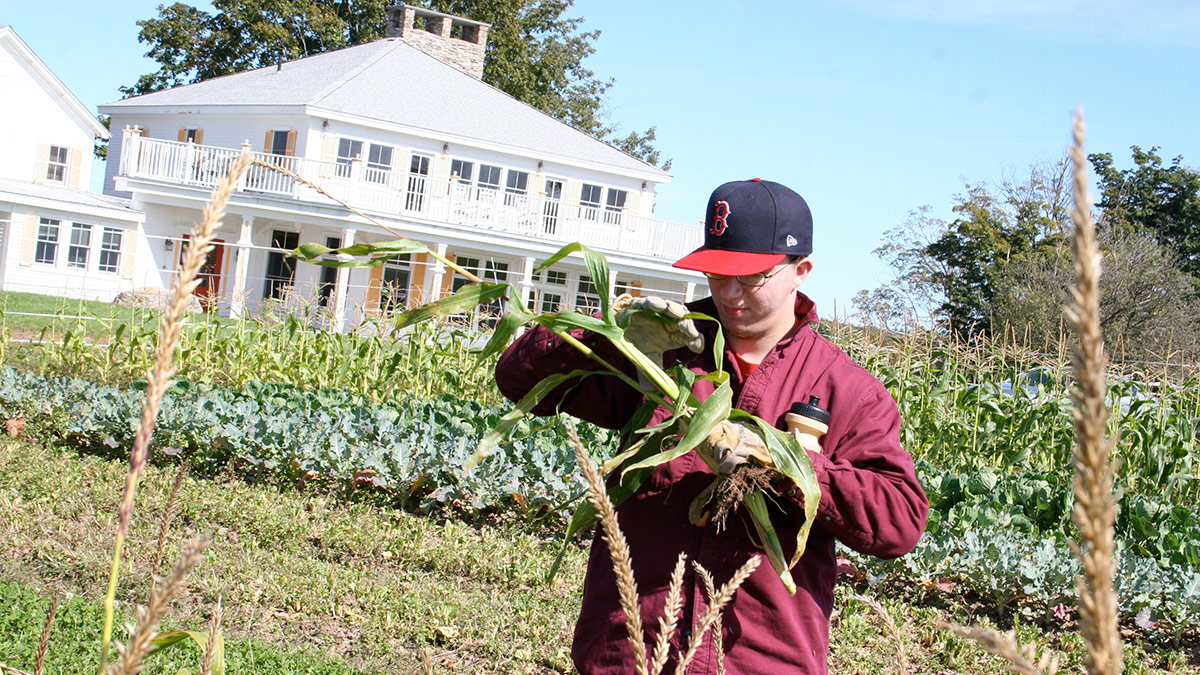
May 5, 2015
Innovations in Your Community
For a small nonprofit organization like the Delaware Highlands Conservancy, partnerships with other area businesses and organizations are key—not just to save time, money, and resources, but to expand our perspective and inspire new ideas.
The business of land conservation is unique in that land trusts pledge to be in existence forever—to steward and defend the conserved forests, farms, and waters that landowners have entrusted us to protect now and for future generations. This requires a significant annual investment and strategic planning—and it means that partnerships are key to long-term success.
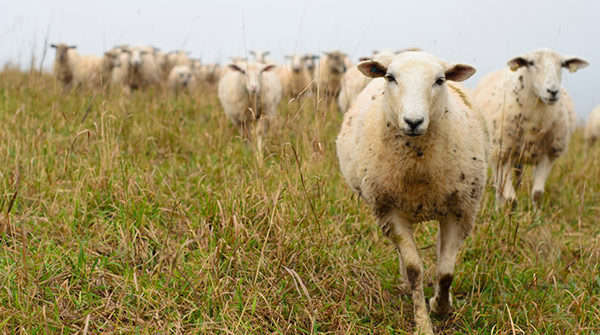 This summer the Conservancy partnered with the Open Space Institute to share responsibilities for monitoring more than 45 of their own protected properties—conducting annual visits to meet with landowners and ensure that the conservation values of the property are protected. One of these visits led us to the Center for Discovery in Harris, Sullivan County, New York. The Center is a residential, educational, and medical facility for children and adults with developmental disabilities, with more than 600 acres protected with a conservation easement held by the Open Space Institute. It is an example of what can be done with a creative vision for protected lands.
This summer the Conservancy partnered with the Open Space Institute to share responsibilities for monitoring more than 45 of their own protected properties—conducting annual visits to meet with landowners and ensure that the conservation values of the property are protected. One of these visits led us to the Center for Discovery in Harris, Sullivan County, New York. The Center is a residential, educational, and medical facility for children and adults with developmental disabilities, with more than 600 acres protected with a conservation easement held by the Open Space Institute. It is an example of what can be done with a creative vision for protected lands.
Land trusts always emphasize that investing in land protection is investing in the community. That protecting our natural areas—working farms and forests, pristine waters, and wildlife habitat—is for the benefit of all. In stewarding their 600+ protected acres in innovative and creative ways, the Center for Discovery has embodied this ideal, creating a resource for the community and a healing space for people and for nature.
The Open Space Institute has also worked with the Center to create the Hurleyville Rail Trail as an economic driver for the Hamlet of Hurleyville, NY, where the Center is working with community leaders to revitalize the town by making it accessible to the people it serves and a vibrant, interesting community for all.
The centerpiece of the protected property at the Center is Thanksgiving Farm, a 298-acre biodynamic and certified organic farm that grows vegetables, flowers, and herbs and is home to livestock including cattle, hens, pigs, and sheep. The farm also includes hoop houses and heated greenhouses for off-season growing. Residents at the Center work on the farm, helping with both planting and harvesting, and contributing in a meaningful way to the fresh, healthy food they will enjoy at mealtimes.
In addition, the farm supports a Community Supported Agriculture (CSA) program with more than 300 members who purchase an annual share of the food that is produced there. Each member gets to take home and enjoy fresh, locally grown food on a weekly basis throughout the summer and fall. The healing gardens at the Center also supplement the farm, with walking paths that wind through medicinal and culinary herbs and flowers, also tended by residents of the Center.
The 298 protected acres—known as Stonewall Preserve—was formerly a dairy farm, owned by one family dating back to the Revolutionary War. Miles of stone walls meander across the property, constructed by the six generations of farmers that came before. The conservation easement that protects this property honors its history and the cultural heritage of Sullivan County farming. It is a living example of how land conservation can be carried forward across the generations while honoring the past; of investing in the community while ensuring a sustainable future for people and for the land.
With the support and generosity of our members, the Conservancy has been able to achieve a great deal in the past twenty-one years, protecting over 14,000 acres in our region since being founded in 1994. And in the past year, the Conservancy has been fortunate enough to receive significant investments from larger organizations, the William Penn Foundation and the New York State Conservation Partnership Program of the Land Trust Alliance, that have recognized the value of our work and our capability to grow. Most importantly, these investments have inspired exciting new partnerships throughout the Upper Delaware River region—partnerships that will help us learn new skills, share our experiences, and evaluate potential next steps for the Conservancy.
The Delaware Highlands Conservancy is currently working on updating our strategic plan and vision for a healthy and sustainable future. If you have ideas you would like us to explore, please contact us at 570-226-3164, 845-583-1010, or by email at info@delawarehighlands.org.

